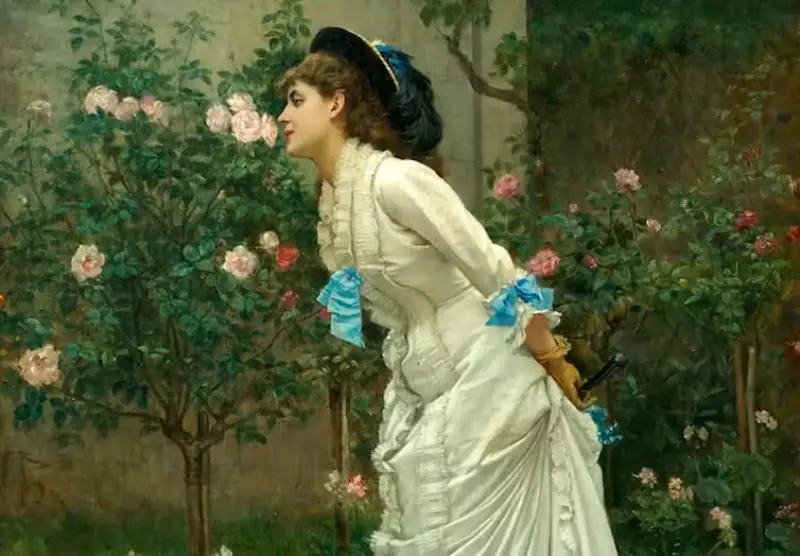
Choosing to be child-free is more common than ever before in some countries, including the US. Many people see not having children an ethical and ecological choice, made to protect the environment, people and other species. Being child-free is about being “green”. Consequently, more positive discourses around childlessness are emerging.
But this was not always the case. In societies that encourage an increased birthrate, motherhood is often presented as natural and caring. Meanwhile, women without children are often described as biological failures, or as deviant. For example, when visible in popular culture – they are often not represented at all – women without children are either presented as animal-lovers like the “crazy cat lady” or animal-killers, like Cruella de Vil. In these examples, the focus on animal represents their supposed inability to care for humans (their species), their “unnaturalness”.
In the 19th century, women without children were already being described as selfish and unnatural. The natural world was conversely used to describe fertile women, who were often compared to flowers in bloom in literature.
The association of women with plants and fertility is an ancient one, found particularly in agricultural pagan figures. Demeter, the ancient Greek goddess of the harvest, for example, was the goddess of grains, but also of marriage and fertility.
Many expressions still link women’s reproductive systems and flowers. In French, the flower is a metaphor for a virgin sexual organ. To avoir ses fleurs (have your flowers) is an expression for having periods, and being une jeune fille en fleur (a young woman in flower) means that the young woman is ready for marriage – and therefore reproduction.
Women themselves are also compared to flowers: in English, both “pretty flower” and “English rose” describe attractive young women. Reducing women to flowers, through these comparisons, is not only misogynistic, but reinforces the social pressure to produce children “on time”. Timing is important in these comparisons, as flowers fade quickly.
Also read: Not all 8-hour Sleep and Botox: Being Childfree in Indonesia
Being Child-Free in the 19th Century
But what about women without children, those flowers that will not produce seeds? My research into literature and paintings from the second half of the 19th century has shown that they were often represented as monstrous horticultural hybrids.
At the time, “hybrid flowers” – which were often sterile – became the preferred metaphor to describe sexually active women who were either unable or refused to bear children. In France, having and raising children was seen as a woman’s natural and civic duty for the nation. Conversely, women who were sexually active but without children were often seen as unnatural and dangerous.
Comparisons that described women as flowers were historically about fertility. How was it then that flowers became a metaphor for sterility at the end of the 19th century?

The emphasis on flowers as sexual organs and as a metaphor for women’s sexuality appears to have been used more often after the Swedish botanist Carl Linnaeus openly discussed the sexuality of plants with anthropomorphic language at the end of the 18th century.
It is important to note that, for a long time, if men knew at all that flowers were sexual organs, they believed they were unisexual and feminine. They did not believe that both male and female organs were involved in the production of fruits.
Once the sexual nature of plants had been established, the nature of the floral metaphor changed and the innocence of the flower was lost. Flowers progressively became the symbol of a young lady with an emerging sexuality or who was waiting to “bear fruit”.
Also read: No, I don’t have children confession of a child protection activist
Horticultural Hybrids
During the second empire in France (1852-1870) and the beginning of the Third Republic (1870-1840), horticultural hybrids were extremely popular.
Horticulturists developed large plants and flowers such as cattleya, hibiscus, nidularium which often looked like enlarged genitals (natural plants are often a lot smaller and less colourful). These hybrids made the sexual analogy even more obvious.
By the end of the 19th century, the artificial hybrids became used for describing, indirectly, near-pornographic scenes. Here is an example from The Kill (1895), a famous novel by Émile Zola. Instead of describing the characters making love, he describes the plants:
As their glances penetrated into the corners of the hothouse, the darkness became filled with a more furious debauch of leaves and stalks; they could not distinguish on the terraces between the marantas, soft as velvet, the gloxinias, purple-belled, the dracoenas, like blades of old lacquer; it was a great dance of living plants pursuing one another with unsatisfied fervour.
Many of the hybrids being created at this time were sterile. They therefore became a metaphor for “unproductive” sexuality. Because they were man-made, they could be seen as a perversion of the laws of nature. Comparing women to those hybrids was a way to criticise what was deemed the artificiality of their infertility, or decision not to have children.
Fertile, childbearing women were frequently compared to natural, more classic flowers such as roses or lilies.
At the time, France was obsessed with its low birth rate. Many politicians believed it explained why France had lost the war against Prussia (1870-1871). Childless women were therefore also seen as bad citizens.
Through their comparisons with hybrid, infertile flowers, women who could not or choose not to reproduce were deemed un-French, undesirable and, in some ways, monstruous.
Understanding how women are associated with nature and very often compared to flowers is essential to understanding how being childless continues to be demonised in contemporary society. As contemporary art, culture and the very language we use demonstrates, child-free women are still often described as “unnatural” or biologically deviant.
Aude Campmas, Lecturer in French Studies, University of Southampton.
This article was first published on The Conversation, a global media resource that provides cutting edge ideas and people who know what they are talking about.






















